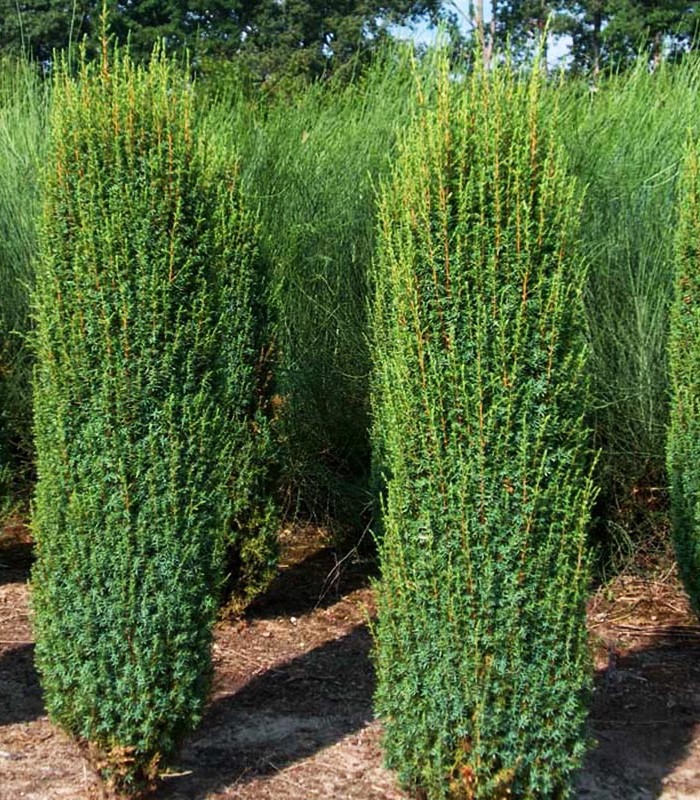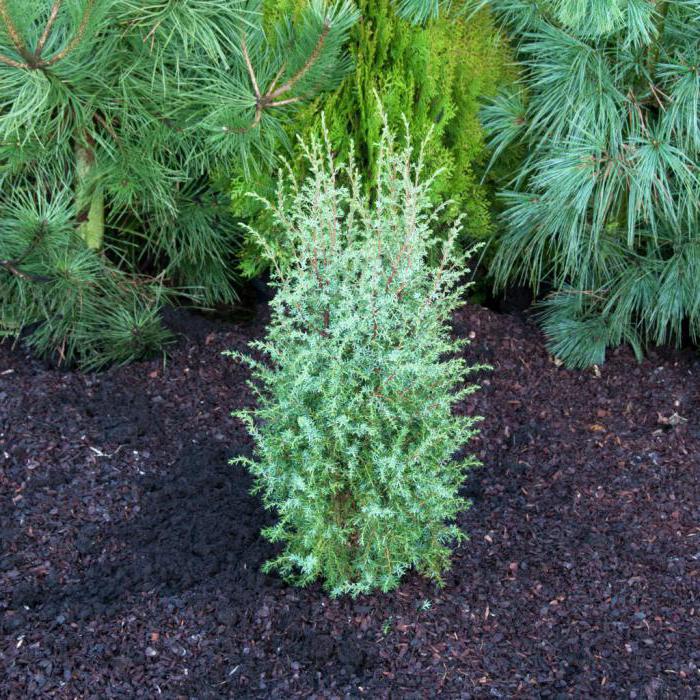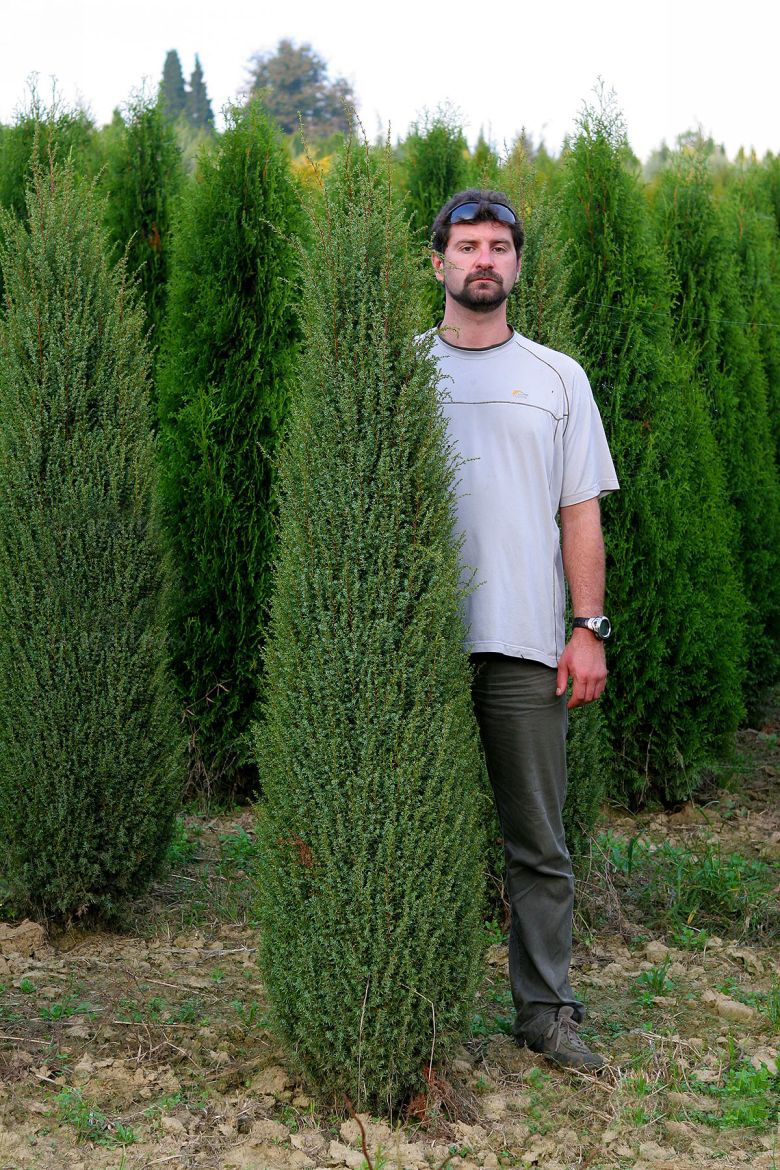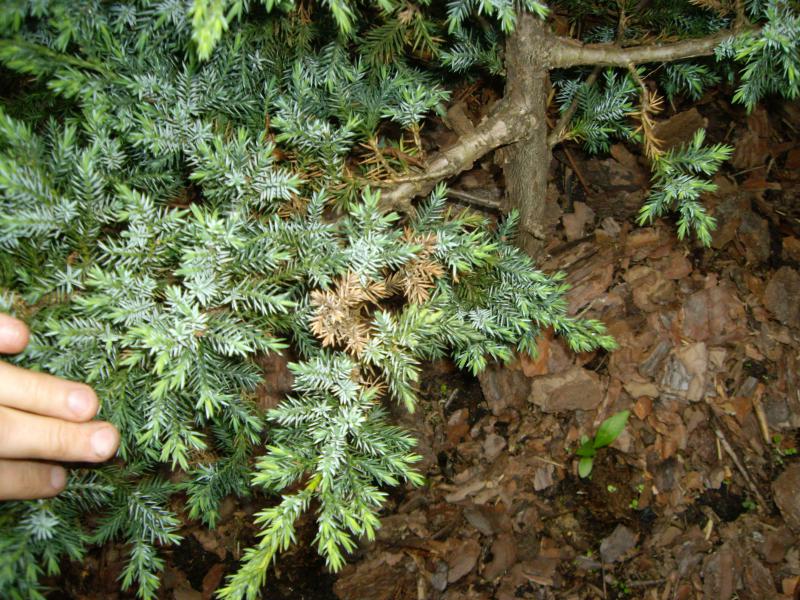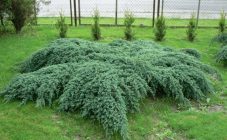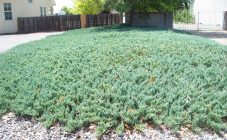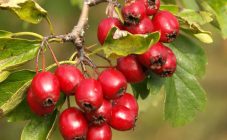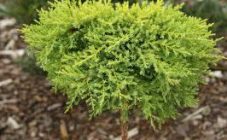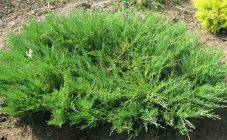Content:
Juniper Hibernik refers to coniferous evergreen shrubs. The dense blue columnar juniper is attractive for use in landscaping. An adult plant reaches 3.5 meters in height, the crown diameter does not exceed 1 meter. The variety is distinguished by a relatively high growth rate. When the maximum height is reached, the side shoots are compacted.
The variety is known in the territory of the Russian Federation, due to its good frost resistance. Can calmly endure the harsh winters of central and northern Russia.
Description of the variety
The homeland of the Hibernika variety is Ireland. In 1838, the varietal name of the common juniper Hibernica was registered. Juniper became widespread in the first half of the 19th century.
The narrow, pyramidal shape of the crown can be 1-1.5 meters in diameter. The juniper is tall. A ten-year-old plant can grow up to 5 meters in height. The average annual growth is 15 cm in height, 5 cm in spread. The variety has a high life expectancy. Instances of about 300 years old have been recorded.
Juniper is columnar, when describing the appearance of which the color of the needles, bluish-green, needle-shaped, is especially prominent, by winter time it changes its shade to dark green. During the growing seasons, it is not prickly. It is located on branches tightly pressed against the trunk. Branches grow vertically upward, becoming denser as the plant matures.
Landing features
The common juniper Khybernika can be propagated both by seeds and by cuttings or layering. Preparation and planting of cuttings are considered optimal. The choice of this method allows you to get exactly the same shrub in appearance.
You can prepare cuttings for planting throughout the year, but it is better to adhere to the following scheme.
In the spring, root the cutting in a greenhouse or greenhouse. When rooting in winter, it is necessary to pre-soak the cutting in water at a temperature of 16-19 ° C.
The size of the planting pit should accommodate the root system of the seedling and exceed the size of the earthen coma by 2-3 times. The optimum depth of the pit is 70 cm, at the bottom of which it is necessary to create a drainage layer.
The distance between adjacent plants should be at least 50 cm. Cuttings should be planted in a sunny place. The choice of a shaded area will lead to loose crown formation and loss of decorative appearance. The root collar should be flush with the topsoil.
Sections should be selected that are free from shadows. Short-term, unlike permanent, shading will not affect the decorative effect of the variety.
As a potting mix, mix peat, turf and sand in a 2: 1: 1 ratio. In this case, the acid-base characteristics of the soil should be in the range of 4.5-6.5 pH units. Alkaline or saline soils are unfavorable for growing Khybernik juniper.
In addition to grafting, you can propagate a juniper plant using cuttings. When choosing this method, you should choose creeping shoots, not upright shoots. The optimal time is the intensive growth and vegetation of the plant.
The selected shoot should be dug in, securing it in a bent position. After a year, the rooted part can be transplanted to another place. The transplanted shrub will adapt to new conditions during the first two years.
Plant care
In dry periods, it is recommended to increase the frequency of watering and carry out additional spraying. Sprinkling once every 7 days in the evening will add extra shine to the needles.
Shallow loosening has a beneficial effect on growth. Loosening after watering will enrich the soil with oxygen, preventing the development of putrefactive processes. To simplify weeding activities, you can mulch the soil around the tree. Creation of peat mulch with a layer of 3-5 cm in dry season will additionally preserve soil moisture.
Pruning care is the removal of dry and damaged branches. It is best to prune in the spring, after the snow has completely melted. With a sharp pruner, it is necessary to carefully cut branches injured under the weight of snow. As such, the formation of the crown in the Khybernika variety is absent.
It is necessary to apply fertilizer mixtures once a season. The first feeding is carried out in late April - early May. For this, nitroammofoska (35-45 grams per 1 square meter) and complex preparations, for example, Kemira-Universal, are suitable.
Diseases and pests
Junipers have a strong immune system. However, if the standards of care and maintenance are not followed, trees can become infected with pests and various diseases.
The most dangerous parasite of the Khybernika juniper is the sawfly. His diet includes needles. After the snow melts, sawflies feed on old needles, moving on to young shoots. In this case, damage occurs not only to the needles themselves, but also to the branches of the tree. Pest infection can be detected by the presence of damaged needles and bald spots on the branches.
There are several ways to get rid of the sawfly: manual collection, attracting birds, installing adhesive plates. In addition, it is necessary to dig up the soil around the tree in order to get rid of possible pupae. The fallen needles must be burned. During the period when caterpillars appear, plants must be treated with Kinmix, Decis or Karbofos.
The fungal disease Fusarium can lead to a decrease in the ornamental type of plant. Yellowing of the needles, drying out of the plant occurs due to damage to the root system of the plant.The roots change color to red and die off. At the first signs of this disease, it is necessary to immediately dig up the infected specimen and treat the roots with a fungicidal preparation (Baktofit, Vitaros). The remaining soil should be treated with Gamair or Alirin-B solutions.
Application in landscape design
The columnar form of the Khybernik juniper is often used as a focal plant in flower beds. The variety is often used as a tapeworm in lawn open spaces. The color of the needles plays effectively when making group plantings with deciduous tree species.
Crown sizes should be considered when choosing neighboring plants. In addition, the juniper prefers acidified soils, so it is worth planting plants in the immediate vicinity with the same soil reaction preferences.
Summing up, we can say that the Khybernik juniper variety will definitely attract attention with its harmonious appearance. The absence of high requirements for soil and maintenance conditions makes the plant attractive for use for decorative purposes. High frost resistance allows growing the plant in climatic zones with low temperatures in winter. Despite the high resistance to various diseases, non-compliance with hygiene standards can lead to a decrease in the decorative appearance and death of the plant. Following simple care requirements will allow you to admire a healthy plant in the garden for a long time.
